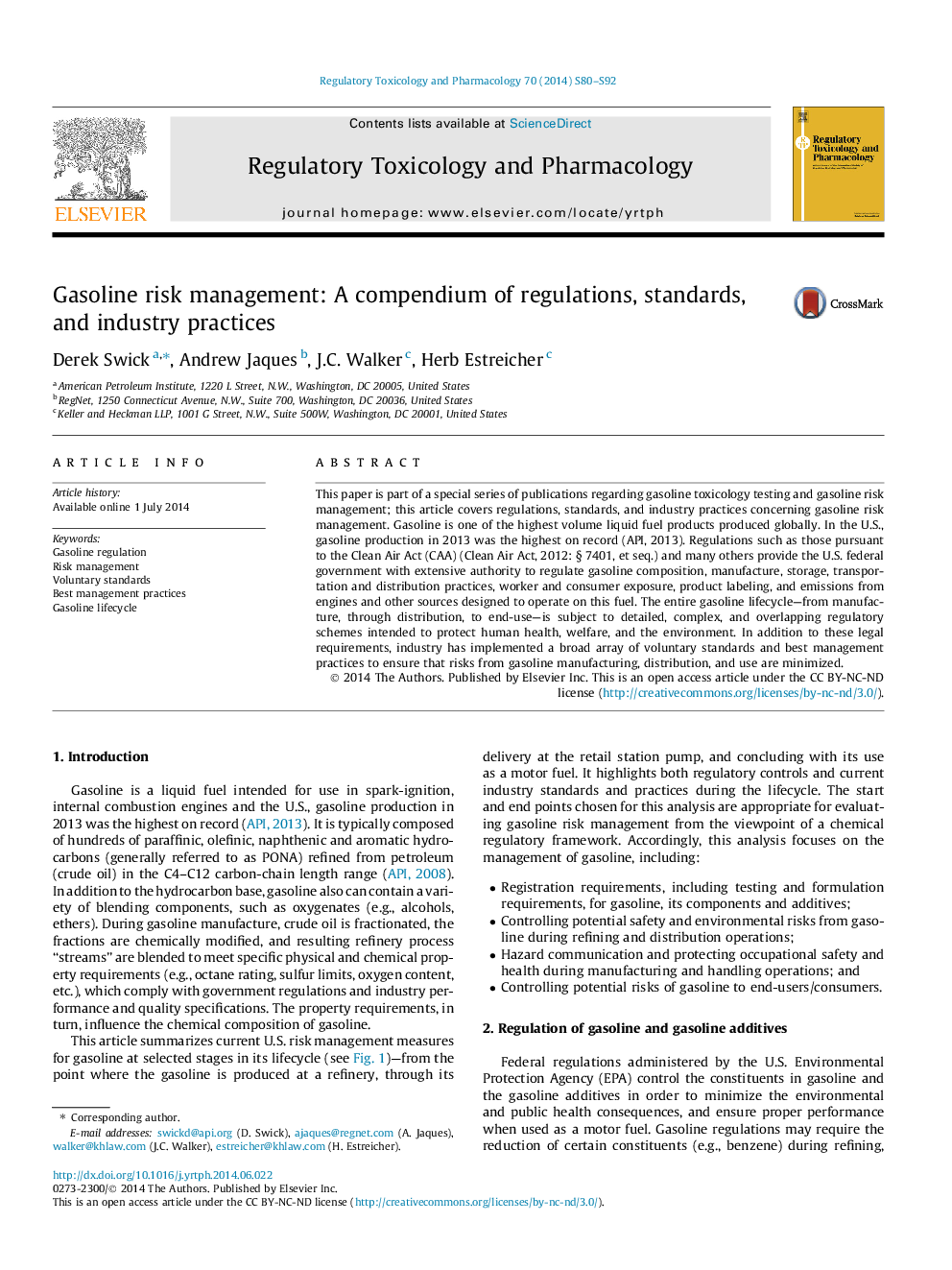| Article ID | Journal | Published Year | Pages | File Type |
|---|---|---|---|---|
| 5856994 | Regulatory Toxicology and Pharmacology | 2014 | 13 Pages |
Abstract
This paper is part of a special series of publications regarding gasoline toxicology testing and gasoline risk management; this article covers regulations, standards, and industry practices concerning gasoline risk management. Gasoline is one of the highest volume liquid fuel products produced globally. In the U.S., gasoline production in 2013 was the highest on record (API, 2013). Regulations such as those pursuant to the Clean Air Act (CAA) (Clean Air Act, 2012: § 7401, et seq.) and many others provide the U.S. federal government with extensive authority to regulate gasoline composition, manufacture, storage, transportation and distribution practices, worker and consumer exposure, product labeling, and emissions from engines and other sources designed to operate on this fuel. The entire gasoline lifecycle-from manufacture, through distribution, to end-use-is subject to detailed, complex, and overlapping regulatory schemes intended to protect human health, welfare, and the environment. In addition to these legal requirements, industry has implemented a broad array of voluntary standards and best management practices to ensure that risks from gasoline manufacturing, distribution, and use are minimized.
Related Topics
Life Sciences
Environmental Science
Health, Toxicology and Mutagenesis
Authors
Derek Swick, Andrew Jaques, J.C. Walker, Herb Estreicher,
